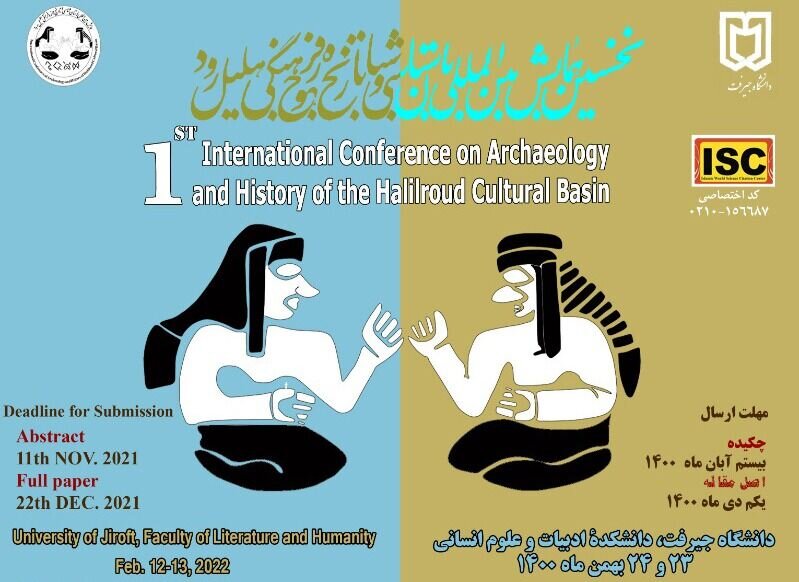Intl. conference to explore Halilroud, Jiroft civilizations

TEHRAN – A host of international academia, archaeologists, and cultural heritage experts are scheduled to discuss Halilroud and Jiroft civilizations.
The University of Jiroft in Kerman province will be hosting the first edition of the conference on February 12-13, 2022 to turn the spotlight on archaeology and history of the Halilroud cultural basin, the dean of the university has announced.
“The conference will present research findings in the field of archeology and history of Halilrud basin, and will provide a platform for researchers and archaeologists to exchange views,” Morteza Mokhtari said on Saturday, IRNA reported.
Jiroft, a fertile plain situated in Iran’s Kerman province, is a splendid cradle of civilization, which dates from the Early Bronze Age (late 3rd millennium BC). Geological factors have led to it being overlooked for years by tourists and archeologists, who have generally been more interested in Mesopotamia some 1,000 km away.
Jiroft is surrounded by mountains on three sides, rising some 4,000 meters high. Many Iranian and foreign experts see the findings in Jiroft as signs of civilization as great as Sumer and ancient Mesopotamia.
In the very early 21st century, rounds of heavy floods along the Halil River swept the topsoil off thousands of previously unknown tombs and led to the discovery of many artifacts believed by archeologists to belong to the Early Bronze Age (late 3rd millennium BC).
Astonishingly the chlorite vases found in Jiroft were not an unfamiliar object for the archeologists. Chlorite vessels similar to the stunning examples unearthed at Jiroft had been found from the Euphrates to the Indus, as far north as the Amu Darya and as far south as Tarut Island, on the Persian Gulf coast of Saudi Arabia.
The primary Jiroft site consists of two mounds a couple of kilometers apart, called Konar Sandal A and B, and measuring 13 and 21 meters high, respectively. It was at Konar Sandal B that the archeologists dug out the seal impressions bearing writing.
So far, the archeologists have excavated around nine vertical meters of Konar Sandal B, discovering vestiges of a monumental, two-story, windowed citadel whose base covers nearly 13.5 hectares (33 acres). Madjidzadeh speculates that this imposing edifice once housed the city’s chief administrative center and perhaps a temple and a royal palace.
Finding the structure’s façade was difficult enough, but locating an entrance took the team weeks of digging through clay packed hard by millennia of rain-wash.
In 2019, a team of Iranian and German archaeologists discovered remnants of a prehistorical settlement during a survey in an ancient hill in Jiroft. Senior Iranian archaeologist Nader Alidad-Soleymani and German Professor Peter Pfalzner co-led a comprehensive survey, which aimed to record evidence about previously excavated sites in the counties of Jiroft, Kahnouj, Anbarabad, Faryab, Rudbar, Qalehganj, and Manujan.
ABU/AFM

Leave a Comment